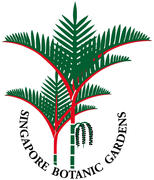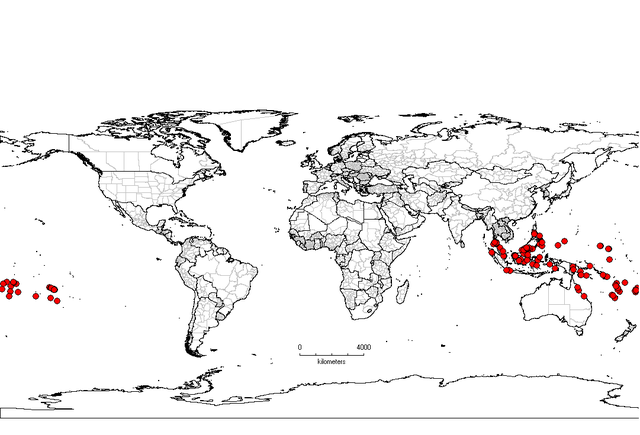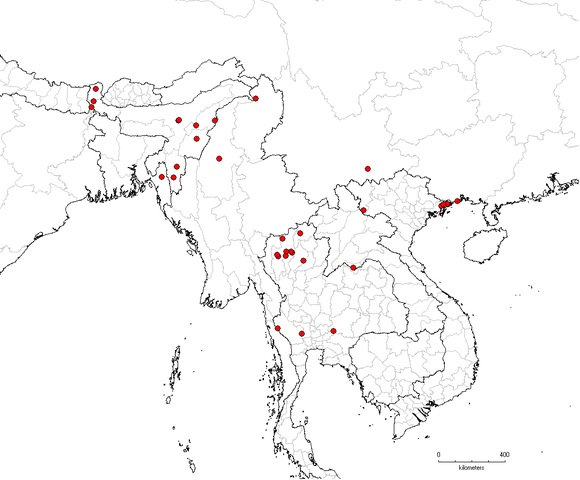Author:
Staples, G. & P. Traiperm.
Author:
Staples, G. & P. Traiperm.
Editor:
George Staples, Esmond Er
Flowers:
Flower sepals glabrous, outer 2 oblong-obovate, c. 44 by 22 mm, apiculate, inner 3 oblong-elliptic or oblong, c. 40 by 16 mm, acute; corolla tubular-campanulate, 7.5–9 cm long, white, glabrous outside, lobes triangular, erect, c. 1.5–1.8 cm long; stamen scales obovate, c. 5 by 3.5 mm, margins slightly erose, filaments 20–26 mm long, bases tomentose, anthers 7–9 mm long; disc annular, c. 1 mm high; ovary 1–2 by c. 2 mm high, glabrous, style 27–30 mm long, glabrous. Fruiting calyx 7–8 cm long, whitish turning brown.
Fruits:
Fruit composed of 4 (or fewer) obovoid nutlets, fruit wall tough and cartilaginous basally, thinner, translucent, very sticky above middle.
Habit:
Climber to 8 m; stems striate, fistulose, glabrous.
Inflorescences:
Inflorescence 2–4-flowered; peduncle thicker than petiole, 11–24 cm long; lower bracts broadly ovate to orbicular, apex shortly acuminate, up to 3.3 cm by 2 cm, upper bracts similar in shape, smaller; pedicel 1–2.1 cm long, thickened above.
Accepted name/Authority/Place of publication:
Remirema bracteata Kerr, Hooker’s Icon. Pl. 35: 1–2, pl. 3435. 1943. TYPE. Thailand. Kanchanaburi: Sai Yok district, on limestone hill, Marcan 2349 (holotype K).
Leaves:
Leaves broadly ovate, 9.5–15 by 7–20 cm, base cordate, apex abruptly acuminate, membranous, underside paler and minutely papillose; lateral veins 6–9 per side, prominent; petiole slender, 3.5–8.5 cm long.
Seeds:
Seed broadly obovoid-globose, 10–12 mm diam., dark brown, glabrous, minutely granular; hilum subcircular, 5–6 mm diam., pale yellowish.






















In general aspect, R. bracteata is rather similar to O. ventricosa (Bert.) Peter, from the West Indies and Mariana Islands of the Pacific, but it differs in technical details. Now that mature fruits have been studied, their morphology is unique in the Convolvulaceae. Plants grow in rugged limestone terrain, and the stems emerge from deep cracks among jagged boulders. The above-ground parts, though expansive, are entirely herbaceous and the aspect of the plant suggests that it dies down during the prolonged dry season, resprouting from enlarged underground parts when the rains return.
Seeds sprouted readily in cultivation and study of container-grown seedlings showed that an enlarged root or tuber developed by the time the young plants were about 1 m tall.